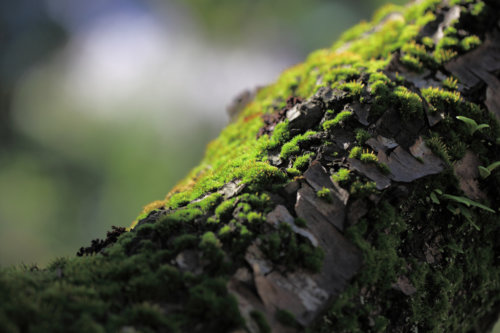Moss Viewing Is Becoming A Huge Hit In Japan
Moss-viewing is on the rise in Japan. The green, flowerless plant that grows in moist grounds, tree trunks, and rocks, is usually ignored or considered a nuisance in other countries. But in Japan, moss is a source of endless fascination.
According to a report from The Wall Street Journal, the recent uptick in the appeal of moss-viewing is especially prevalent among tourists whose interested include organized nature excursions like mountain hiking. Japan has about 1,600 – 20,000 different species of moss, and many people make it a hobby to document the types and variety. Recently, Japanese hotels have increased their offerings of moss-themed packages called “Moss Girl Stays” that offer travel packages complete with guides who take guests to mossy forests and places where they can experience moss-themed drinks.
There has also been a trend of young women who go by the name, “moss girls” and put together moss-viewing parties. Others wear the plant on a ring, which comes with small containers that hold moss instead of a stone. There’s also the design trend of displaying moss balls as decor, usually in a container of water, but often simply in a bowl. Moss only needs minimal water and care to survive, and many enjoy its aesthetics as a home plant, similar to a cactus or the bonsai tree.
In a 2015 article in The New Republic, Maku Nozu and Brian Thompson, instructors at the University of South Florida, aptly illustrated how Japan’s obsession with moss is a reflection of the values of its culture. Nozu and Thompson write that the slow pace it takes moss to grow, the way moss often perseveres in spite of harsh conditions, and its beauty despite imperfections (an aesthetic concept called Wabi-sabi) are just some of the cultural values reflected in the hobby of Japanese moss-viewing.
Nozu and Thompson also attribute some of the increased interest in moss to a popular book published in 2011 called Mosses, My Dear Friends, wherein the author Hisako Fujii writes about his interest. The book sold 40,000 copies.
Last year, amid a surge in interest in moss-viewing, some critics described moss viewing as being more popular among women than men. “Many women admire plants and flowers as they hike, and that may have piqued [the ubiquitous] interest in moss,” Fujii told the BBC last year. Takeshi Ueno, a plant ecology expert at Tsuru University and a leader of moss observation trips, also told The Japan Times that it could also be connected to mountain climbing, which is another recent popular interest for Japanese modern women, TIME has reported.
One of the most famous moss gardens in Japan is Kyoto’s Saiho-ji Temple, with an estimated 120 variety of mosses. (The Guardian listed it as one of the 10 best gardens you’ve probably never heard of, describing it as a land of fairies, wherein the moss covers the floor “like a deep-pile carpet surrounding the base of maple trees and bamboo groves.”)
The art of moss-viewing is so unique that the hobby has become a point of fascination in and of itself. In Mosses, My Dear Friends, Fujii writes:
“Like an undisturbed treasure from another era, the moss seemed to be everywhere at once. It had completely covered the trees, the boulders, and even the ground, wrapping the entire forest in its luminous green fur…This, you might say, was the beginning of my love affair with moss.”
Even for those who don’t count moss-viewing among their hobbies, the interest is a reminder to pay close attention to another aspect of nature that is often overlooked without a second glance.




































